The boat’s motor hums loudly as we chug upstream, Mandalay’s golden temples disappearing behind us in the haze. Watermelon fields line the river, vines dangling over the edge in places where the current erodes the steep, sandy banks. Women crouch at water’s edge, washing clothes or watering cattle.
Perched on the bow, my eyes scan the muddy water, first left, and then right. Nothing yet. “They’re up here,” says Thant Zin, pointing ahead towards the western shore, where a handful of fishermen pulled their boats against the bank. “The dolphins like it over here, away from the construction.”
The flat midday sunlight reflects off the water, forming a continuous wash of grey from river to sky. I strain my eyes, searching. And then a dorsal fin crests the surface — the dolphins are here.
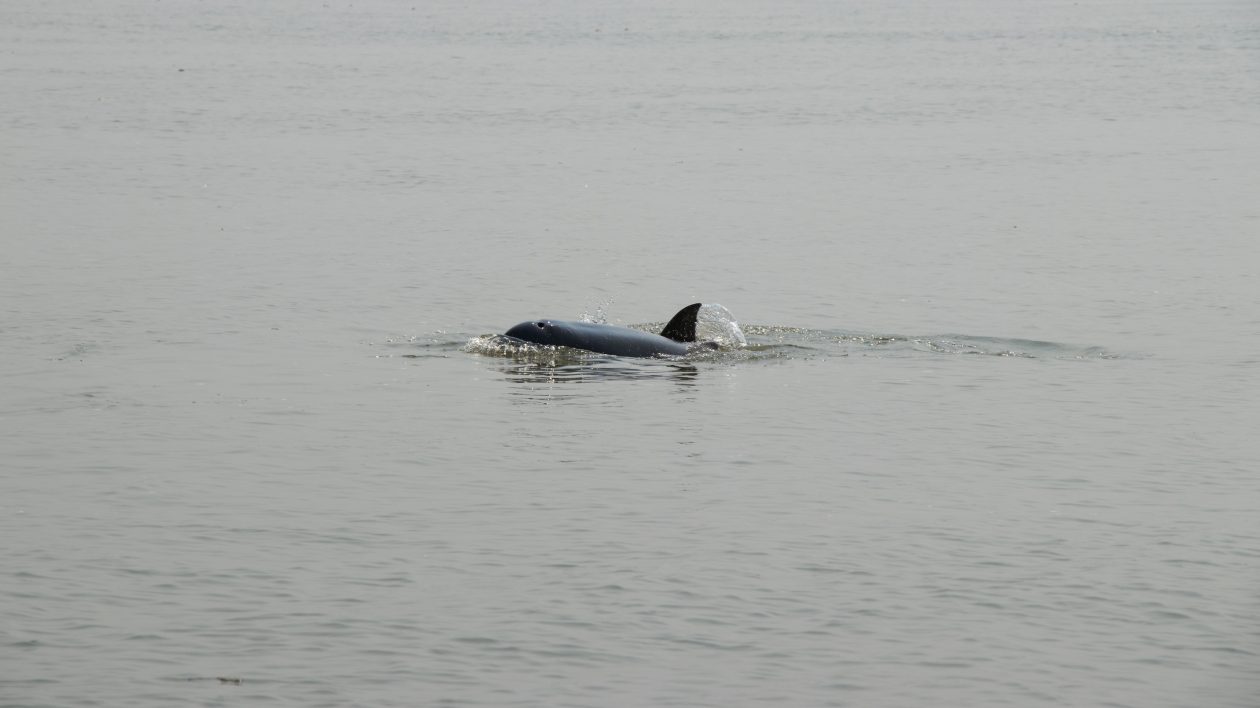
A Century of Cooperation
The grey bullet swimming towards us isn’t just any cetacean — it’s an endangered Irrawaddy dolphin. Called “river pigs” by the ancient Chinese, Irrawaddy dolphins are found in both rivers and coastal areas in southeast Asia. With a long, grey body and a melon-shaped head, they look rather unremarkable.
But the dolphins that live here in the Ayeyarwaddy River are extremely special — they’ve learned to fish with humans.
Our boat pulls up to the riverbank, and I walk down a narrow log plank onto the shore. Thant Zin, a tourism manager at the Wildlife Conservation Society, points towards the small wooden fishing boats. “They will take you to the dolphins.”
I sit on a narrow bench in the middle of the boat, crammed in between fishing nets and my Burmese guides. U Kyaw Soe stands at the bow, while U Kyaw Than is at the stern behind me. We push off, floating with the motor off just a few meters from shore.
Crouching on the bow, U Kyaw Soe produces a thin, wooden dowel and drums it against the side of the boat. Thunk, rattle. Thunk, rattle. Thunk, rattle.
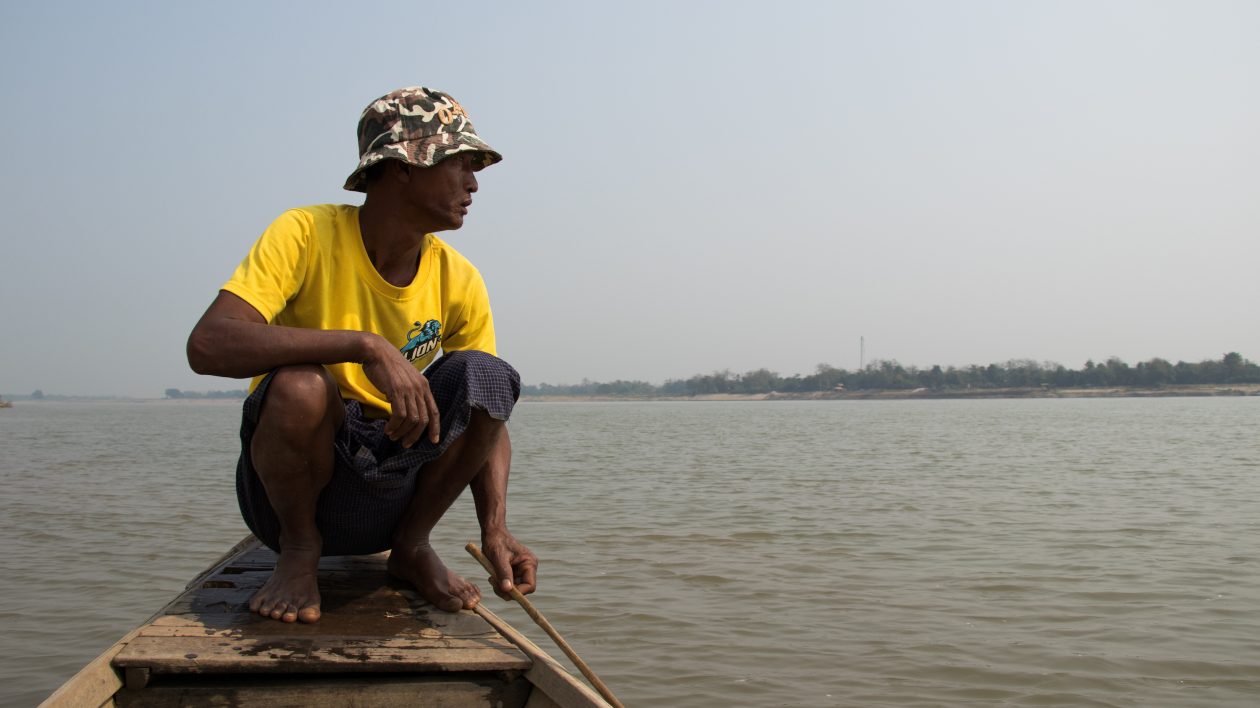
We watch the water, waiting. Thunk, rattle. Then U Kyaw Than begins to call to the water, his voice a cross between a cat’s purr and a turkey’s gobble. Grasping a paddle, he splashes the water towards the bow.
Another fin arcs above the surface. And then a second. Thunk, rattle. A third dolphin swims closer to us, it’s little calf trailing close behind.
The rapping stops. U Kyaw Soe drops the dowel and gathers a large, weighted fishing net in his hands. Poised on the bow, he waits, the net’s weights rattling around his ankles. The dolphins swim around us, herding the fish closer and closer to the boat beneath the murky water.
Just as I wonder what the fishermen are waiting for, one dolphin arches its back and waggles its dorsal fin — a signal. U Kyaw Soe twists his entire body, flinging the net out towards the dolphin. It blossoms open in midair, weights falling down onto the surface with a woosh. The dolphins dart around the edges as it sinks to the bottom, snatching up tiny fish trying to escape.
What I had just witnessed is incredibly rare — a wild animal hunting cooperatively with a human, communicating with each other through clear signals. It’s one of just a handful of cases of human-animal mutualism in the world. And not all Irrawaddy dolphins fish with humans; only the ones that live here in Myanmar.
Even more incredible is that this relationship has existed for more than a century. “We interviewed a 108-year-old man who learned [how to fish with dolphins] from his grandfather,” says Thant Zin, “so they have done this for more than 150 years.”
The local origin myth tells of a fisherman’s wife crying on the riverbank, worried about how to feed her family when there were so few fish. Seeing her distress, a dolphin approached and promised her that they would help the fishermen, but only so long as the fishermen promised to protect the dolphins in return.
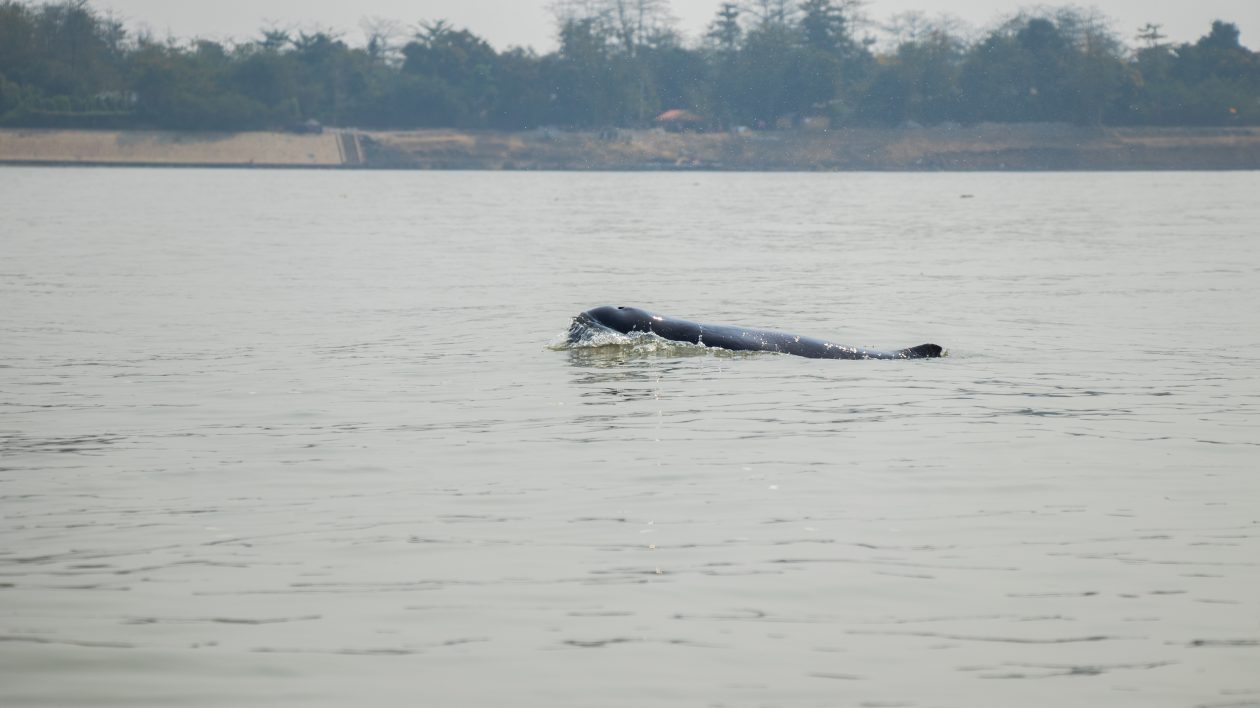
U Kyaw Soe hauls in the net, hand over hand, lifting it into the boat. Water swills beneath my feet as I watch him gingerly pick out about two-dozen tiny fish. Some are long and slender, others resemble tiny puffer fish, but each is no more than a few inches long.
Myanmar has the largest number of small-scale fisheries in the world, accounting for 8 percent of the nation’s GDP. Though tiny, these fish form a critical source of food for local people, who often eat them fried whole and mixed with rice.
So far, the dolphins have upheld their end of the bargain. Scientists discovered that fishermen catch up to triple the amount of fish with the dolphin’s help, compared to fishing alone.
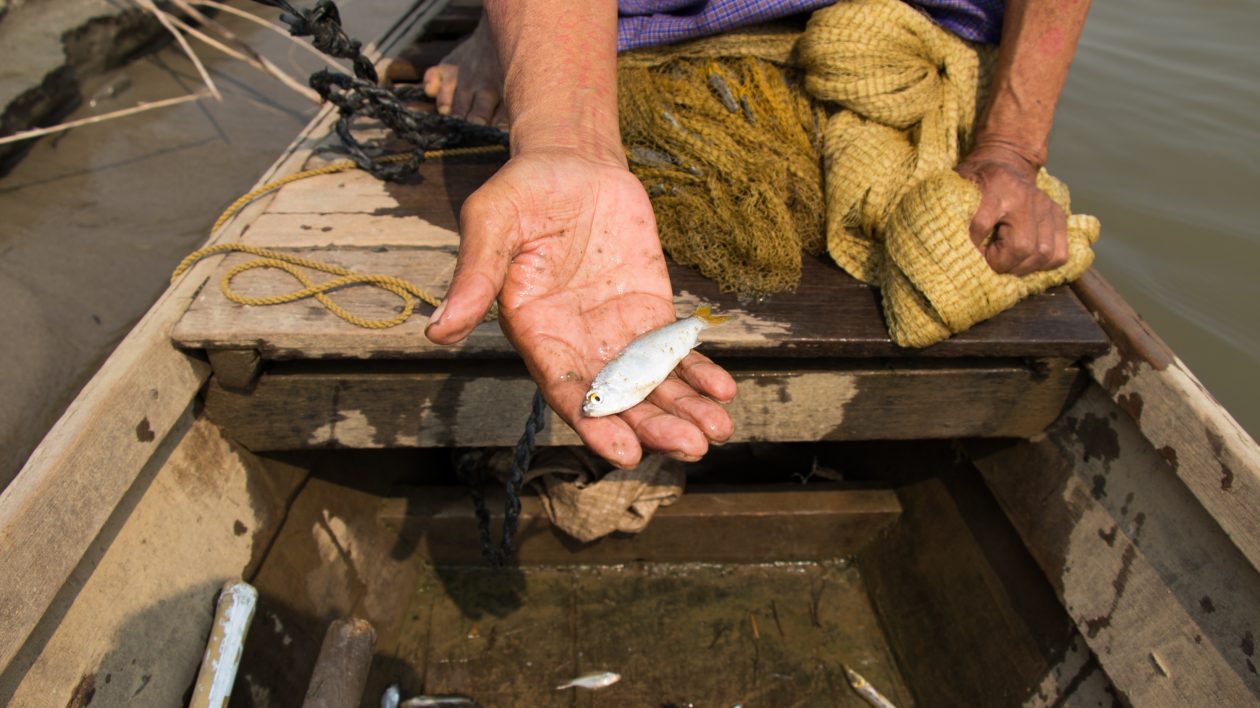
Deadly Currents
Irrawaddy dolphins are endangered throughout their range. Three distinct populations live in different portions of the Ayeyarwaddy River, with a combined population of only 76 dolphins, as of February 2018.
Working with the Myanmar government, in 2005 the Wildlife Conservation Society (WCS) established a dolphin protected area on 74 kilometers of river, the first aquatic protected area in the country. In October 2018, they expanded this protected area by an additional 100 kilometers.
Accompanying regulations restrict the use of gill nets, which can entangle and drown dolphins, and ban other major threats, like gold mining and dredging. But despite these protections, the death toll continued to rise. From 2002 to 2016, 42 Irrawaddy dolphins were found dead, 29 of them in the protected area.
But perhaps the biggest threat are illegal fishermen who — rather than fishing with the dolphins — electrocute them instead.
But perhaps the biggest threat are illegal fishermen who — rather than fishing with the dolphins — electrocute them instead.
Illegal fishermen glide along the river under the cover of night, slipping wire-laced nets into the water. Car batteries sit in the bottom of the boat, their wires training overboard. They flick a switch. The surface is still, but beneath the water an electric current stuns the surrounding fish.
Known as electrofishing, these tactics are rapidly depleting fish populations along the Ayeyarwaddy. “It has been happening on a small scale since 2003, and used more and more since 2007,” says Naing Lin, who works for WCS Myanmar. Naing Lin says that electrofishing is jeopardizing fish populations that both the dolphins and legal fishermen rely on for food.
It’s also killing dolphins.
Of the dolphins found dead since 2002, Naing Lin says that an estimated 29 percent died from electrofishing and 14 perfect from entanglement in gillnets. But those numbers are likely conservative, as they could not identify a clear cause of death for nearly half of the dolphins found dead.
As the dolphin population dwindles, so too does the number of men who know how to fish with them. Thant Zin says that it takes considerable practice to learn how to call in the dolphins and interpret their directions on where and when to throw the net. But as electrofishing depletes fish populations, more and more men are forgoing fishing for other forms of income. WCS reports that only about 65 fishermen in the Mandalay area still have the knowledge to fish with dolphins.
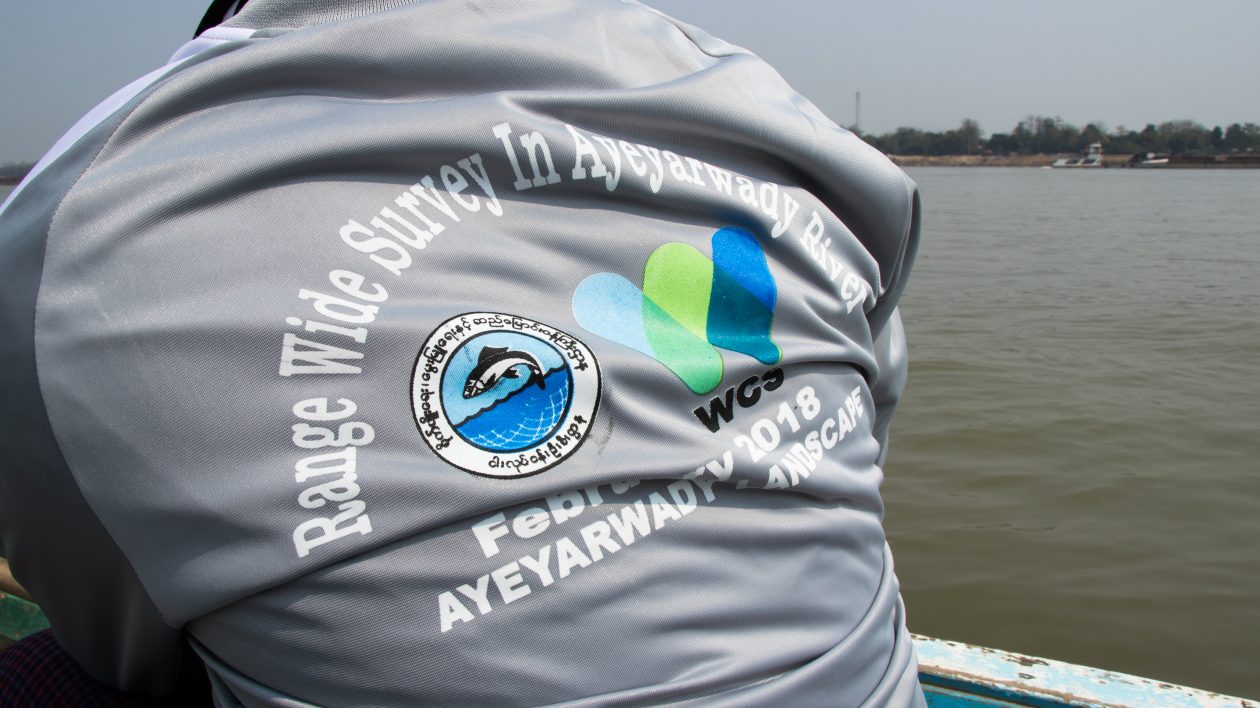
Is Ecotourism the Answer?
WCS and other conservationists are working on two fronts to save the Irrawaddy dolphins and the cooperative fishing tradition.
Enforcement within the protected area is the first target. As we coasted back down river later that afternoon, Than Zin pointed out a high sandbar where the government arrested illegal fishermen just a week earlier. Electrofishing is illegal in Myanmar, says Thant Zin, and first-time offenders have their nets confiscated. Additional offenses are punished by fines and a jail term of 6 months.
“But law enforcement is very weak,” he says. WCS and the government are currently running two patrols per month, but equipment shortages and funding limit their effectiveness.
Illegal fishermen are also increasingly well-organized. Local gangs secure powerful engines that can out-run law enforcement and even seize back confiscated equipment, according to National Geographic. Attempted arrests can turn violent, with reports of fishermen attacking patrols with catapults loaded with sharpened nails.
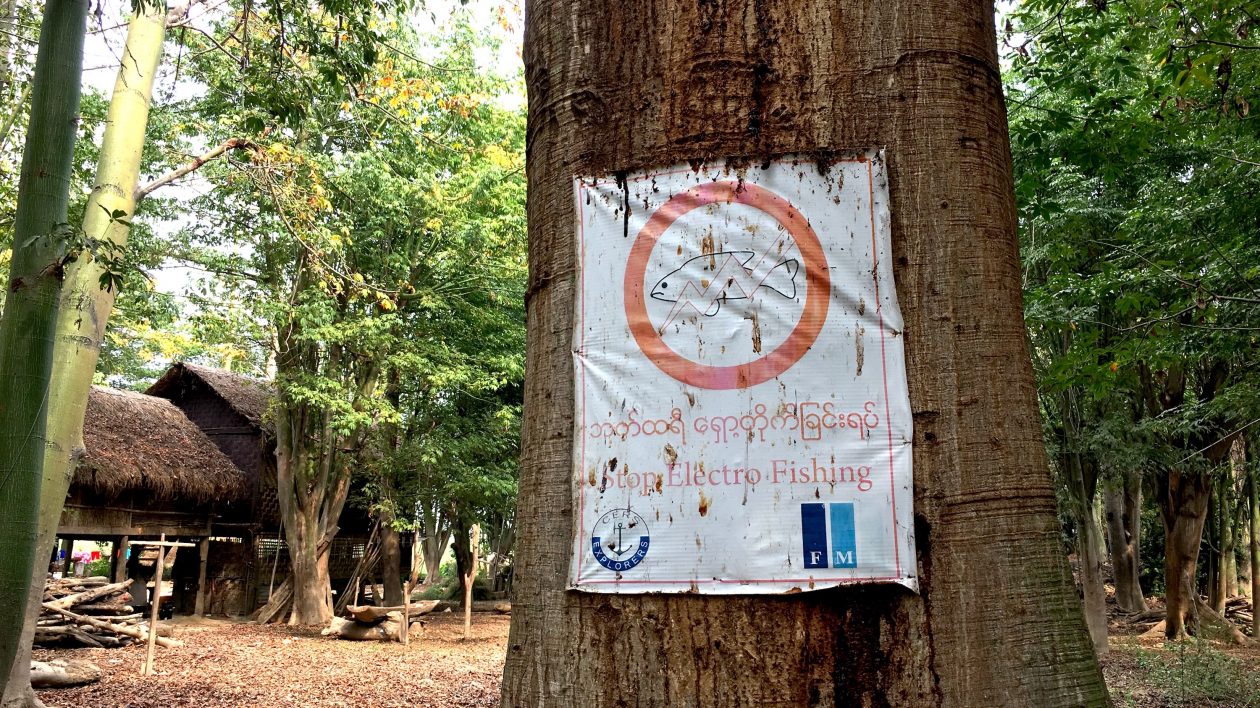
Even improved enforcement won’t help preserve the cooperative fishing tradition, which is why WCS is also piloting an ecotourism program. Tourists keen to see a glimpse of rural Myanmar are boated upriver to watch the fishermen and dolphins work together, followed by a traditional Burmese lunch and tour of a riverside village.
Participating fishermen agree to forgo illegal fishing in exchange for a share in the profits, and different households in the village take turns providing meals. Naing Lin says that the program is are already encouraging young men to continue learning how to fish with dolphins.
Cruising back down river, I watch the sun set over the ruins of Mingun temple. I look back up river, searching for a final glimpse of the dolphins amid the menagerie of boats. But they’re gone.
As the Ayeyarwaddy changes, the dolphin’s future is uncertain. We risk losing not just another species, but one that has learned to work alongside of us. The dolphins have kept their end of the bargain, and hopefully we humans can keep ours, too.




Sure hope more solid answers to this situation can be implemented soon. More of these situations to come, no doubt, as ever more people look to make an easier living, creating hardship for all. Hurts the heart.
This makes me sick